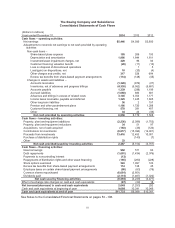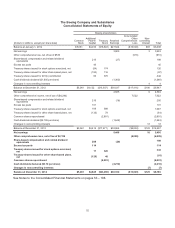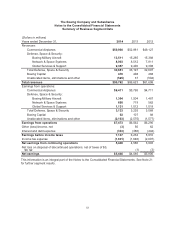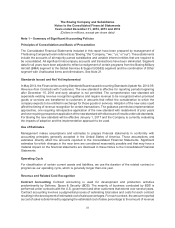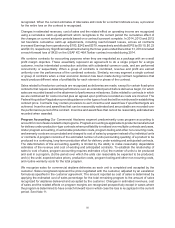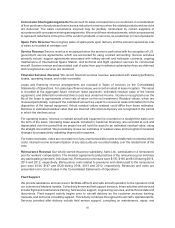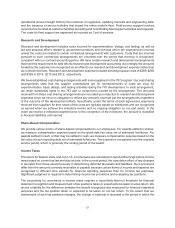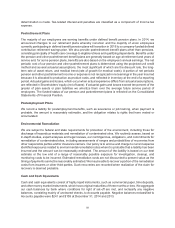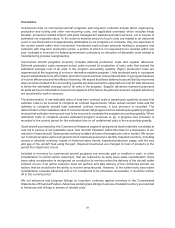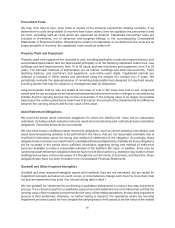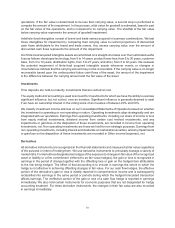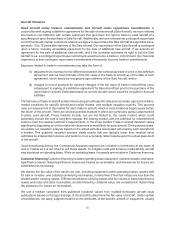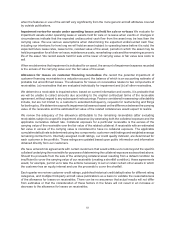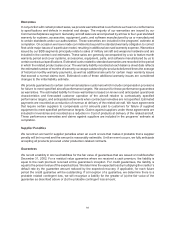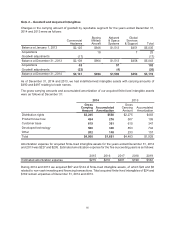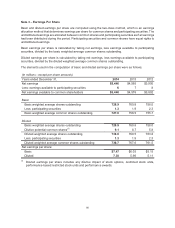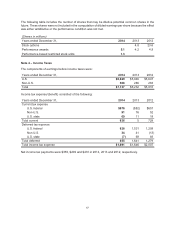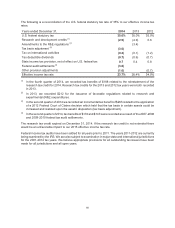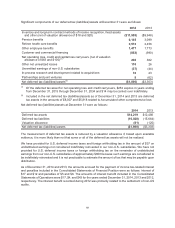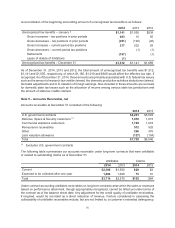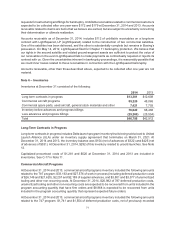Boeing 2014 Annual Report Download - page 73
Download and view the complete annual report
Please find page 73 of the 2014 Boeing annual report below. You can navigate through the pages in the report by either clicking on the pages listed below, or by using the keyword search tool below to find specific information within the annual report.61
operations. If the fair value is determined to be less than carrying value, a second step is performed to
compute the amount of the impairment. In this process, a fair value for goodwill is estimated, based in part
on the fair value of the operations, and is compared to its carrying value. The shortfall of the fair value
below carrying value represents the amount of goodwill impairment.
Indefinite-lived intangibles consist of brand and trade names acquired in business combinations. We test
these intangibles for impairment by comparing their carrying value to current projections of discounted
cash flows attributable to the brand and trade names. Any excess carrying value over the amount of
discounted cash flows represents the amount of the impairment.
Our finite-lived acquired intangible assets are amortized on a straight-line basis over their estimated useful
lives as follows: developed technology, from 5 to 14 years; product know-how, from 5 to 30 years; customer
base, from 3 to 19 years; distribution rights, from 5 to 27 years; and other, from 3 to 32 years. We evaluate
the potential impairment of finite-lived acquired intangible assets whenever events or changes in
circumstances indicate that the carrying amount may not be recoverable. If the carrying value is no longer
recoverable based upon the undiscounted future cash flows of the asset, the amount of the impairment
is the difference between the carrying amount and the fair value of the asset.
Investments
Time deposits are held-to-maturity investments that are carried at cost.
The equity method of accounting is used to account for investments for which we have the ability to exercise
significant influence, but not control, over an investee. Significant influence is generally deemed to exist
if we have an ownership interest in the voting stock of an investee of between 20% and 50%.
We classify investment income and loss on our Consolidated Statements of Operations based on whether
the investment is operating or non-operating in nature. Operating investments align strategically and are
integrated with our operations. Earnings from operating investments, including our share of income or loss
from equity method investments, dividend income from certain cost method investments, and any
impairments or gain/loss on the disposition of these investments, are recorded in Income from operating
investments, net. Non-operating investments are those we hold for non-strategic purposes. Earnings from
non-operating investments, including interest and dividends on marketable securities, and any impairments
or gain/loss on the disposition of these investments are recorded in Other income/(expense), net.
Derivatives
All derivative instruments are recognized in the financial statements and measured at fair value regardless
of the purpose or intent of holding them. We use derivative instruments to principally manage a variety of
market risks. For derivatives designated as hedges of the exposure to changes in fair value of the recognized
asset or liability or a firm commitment (referred to as fair value hedges), the gain or loss is recognized in
earnings in the period of change together with the offsetting loss or gain on the hedged item attributable
to the risk being hedged. The effect of that accounting is to include in earnings the extent to which the
hedge is not effective in achieving offsetting changes in fair value. For our cash flow hedges, the effective
portion of the derivative’s gain or loss is initially reported in comprehensive income and is subsequently
reclassified into earnings in the same period or periods during which the hedged forecasted transaction
affects earnings. The ineffective portion of the gain or loss of a cash flow hedge is reported in earnings
immediately. We also hold certain instruments for economic purposes that are not designated for hedge
accounting treatment. For these derivative instruments, the changes in their fair value are also recorded
in earnings immediately.


